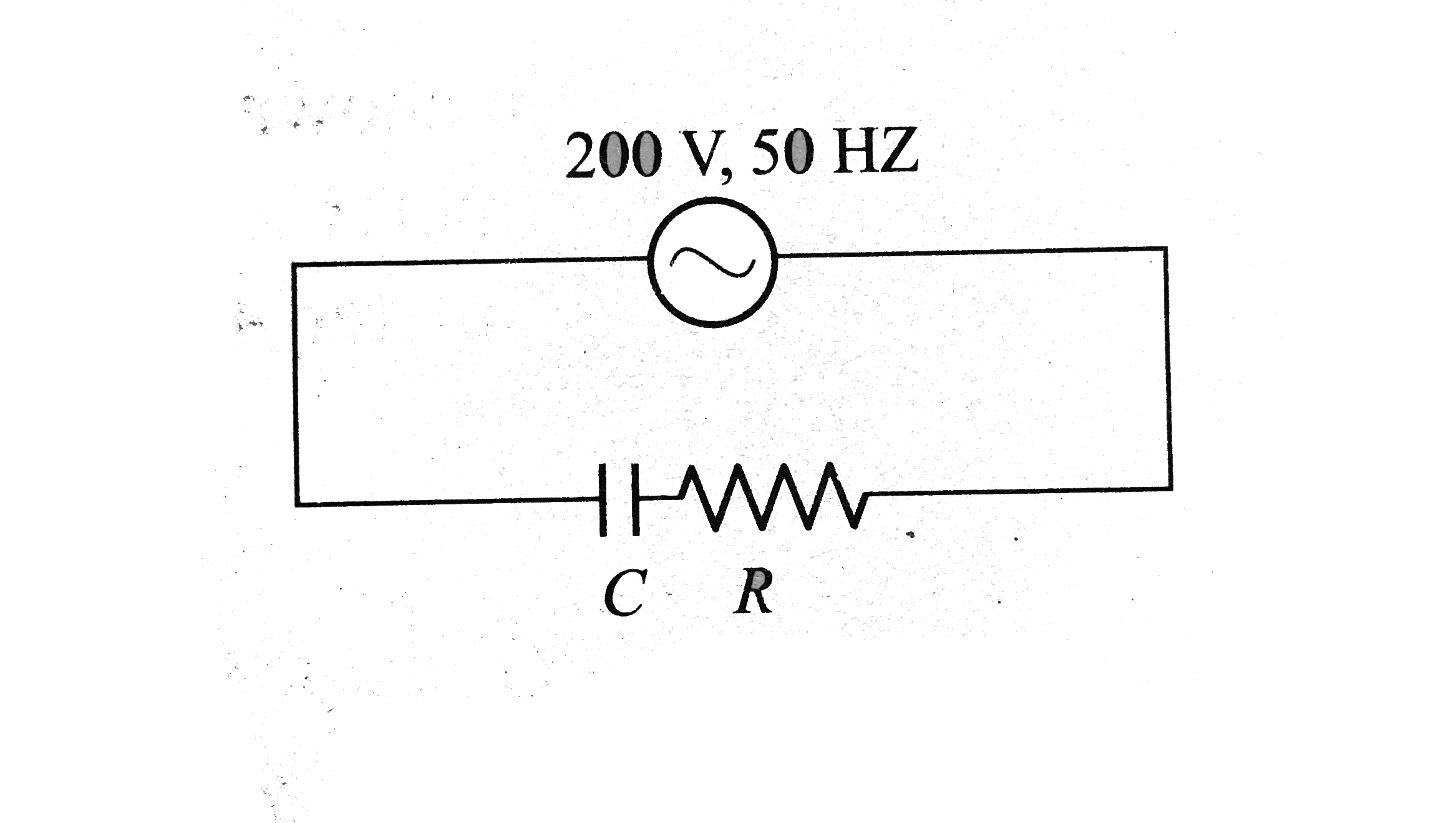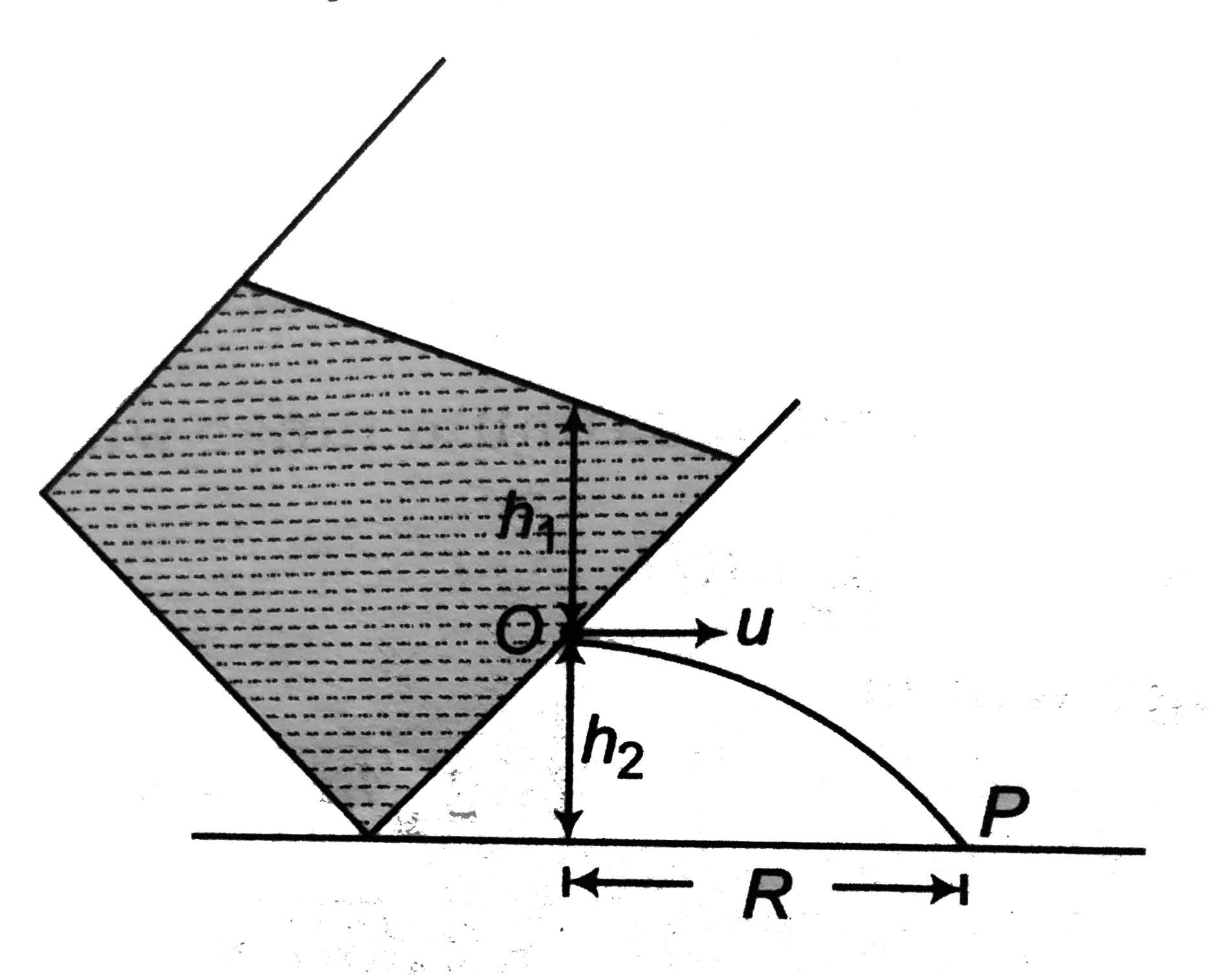If VS(t)=220√2sin(2π50t), find (a)i(t) ,(b)V(R) and (c )V(C)(t)
To solve the problem step-by-step, we will find the current i(t), the voltage across the resistor VR(t), and the voltage across the capacitor VC(t) based on the given voltage source VS(t)=220√2sin(2π50t).
Step 1: Identify the given voltage source
The voltage source is given as:
VS(t)=220√2sin(2π50t)
From this, we can identify:
- The peak voltage V0=220√2
- The RMS voltage Vrms=220V
- The angular frequency ω=2π×50=100πrad/s
Step 2: Calculate the impedance Z
For an R-C circuit, the impedance Z is given by:
Z=√R2+X2C
where XC=1ωC.
Step 3: Find the current i(t)
The RMS current Irms can be calculated using:
Irms=VrmsZ
The peak current I0 is given by:
I0=Irms√2=VrmsZ√2
Thus, the current as a function of time is:
i(t)=I0sin(ωt+ϕ)
where ϕ is the phase difference between the voltage and the current.
Step 4: Calculate the phase angle ϕ
The phase angle ϕ can be calculated using:
tan(ϕ)=XCR=1ωRC
Thus, we can find ϕ as:
ϕ=tan−1(1ωRC)
Step 5: Find the voltage across the resistor VR(t)
The voltage across the resistor is given by:
VR(t)=i(t)⋅R
Substituting i(t):
VR(t)=I0Rsin(ωt+ϕ)
Step 6: Find the voltage across the capacitor VC(t)
The voltage across the capacitor lags the current by 90 degrees:
VC(t)=i(t)⋅XC
Substituting i(t):
VC(t)=I0XCsin(ωt+ϕ−90∘)
Final Answers
- i(t)=I0sin(100πt+ϕ)
- VR(t)=I0Rsin(100πt+ϕ)
- VC(t)=I0XCsin(100πt+ϕ−90∘)
The voltage source is given as:
VS(t)=220√2sin(2π50t)
From this, we can identify:
- The peak voltage V0=220√2
- The RMS voltage Vrms=220V
- The angular frequency ω=2π×50=100πrad/s
For an R-C circuit, the impedance Z is given by:
Z=√R2+X2C
where XC=1ωC.
The RMS current Irms can be calculated using:
Irms=VrmsZ
The peak current I0 is given by:
I0=Irms√2=VrmsZ√2
Thus, the current as a function of time is:
i(t)=I0sin(ωt+ϕ)
where ϕ is the phase difference between the voltage and the current.
The phase angle ϕ can be calculated using:
tan(ϕ)=XCR=1ωRC
Thus, we can find ϕ as:
ϕ=tan−1(1ωRC)
The voltage across the resistor is given by:
VR(t)=i(t)⋅R
Substituting i(t):
VR(t)=I0Rsin(ωt+ϕ)
The voltage across the capacitor lags the current by 90 degrees:
VC(t)=i(t)⋅XC
Substituting i(t):
VC(t)=I0XCsin(ωt+ϕ−90∘)
- i(t)=I0sin(100πt+ϕ)
- VR(t)=I0Rsin(100πt+ϕ)
- VC(t)=I0XCsin(100πt+ϕ−90∘)
Similar Questions
When a voltage Vs=200√2sin(100t)V is applied to an ac circuit the current in the circuit is found to be i=2sin[ωt+(π/4)]A. Find the average power consumed in the circuit.
View SolutionWhen a voltage Vs=200√2sin(100t)V is applied to an ac circuit the current in the circuit is found to be i=2sin[ωt+(π/4)]A. Find the average power consumed in the circuit.
View SolutionIn an RC series circuit(in fig), the rms voltage of source is 200V and its frequency is 50 Hz, if R=100ΩandC=100πμF, find
(a) inpedance of the circuit.
(b) power factor angle,
(c ) power factor,
(d) current,
(e) maximum current
(f) voltage across R,
(g) voltage across C,
(h) maximum voltage across R,
(i) maximum voltage across C,
(j) <P>,
(k) <PR>.
(l) <PC>
(m) i(t), VR(t),andVC(t).

View SolutionIn the figure show,

find v,top and R.
View SolutionIf the voltage in an ac circuit is represented by the equation,V=220√2sin(314t−ϕ) V. Calculate
(a) peak and rms.value of the voltage
(b) average voltage
(c) frequency of AC
View SolutionIn an L-C -R series circuit connected to an AC source V=V0sin(100π(t)+π6)VR=40V,VL=40andVC=10V, resistance R=4Ω
peak value of current is
View SolutionFollowing are equations of four waves :
(i) y1=asinω(t−xv)
(ii) y2=acosω(t+xv)
(iii) z1=asinω(t−xv)
(iv) z1=acosω(t+xv)
Which of the following statements are correct ?
View SolutionFollowing are equations of four waves :
(i) y1=asinω(t−xv)
(ii) y2=acosω(t+xv)
(iii) z1=asinω(t−xv)
(iv) z1=acosω(t+xv)
Which of the following statements are correct ?
View SolutionThe velocities of sound in an ideal gas at temperature T1andT2 K are found to be V1andV2 respectively. If ther.m.s velocities of the molecules of the same gas at the same temperatures T1andT2 are v1andv2 respectively then
View SolutionThe velocities of sound in an ideal gas at temperature T1andT2 K are found to be V1andV2 respectively. If ther.m.s velocities of the molecules of the same gas at the same temperatures T1andT2 are v1andv2 respectively then
View Solution